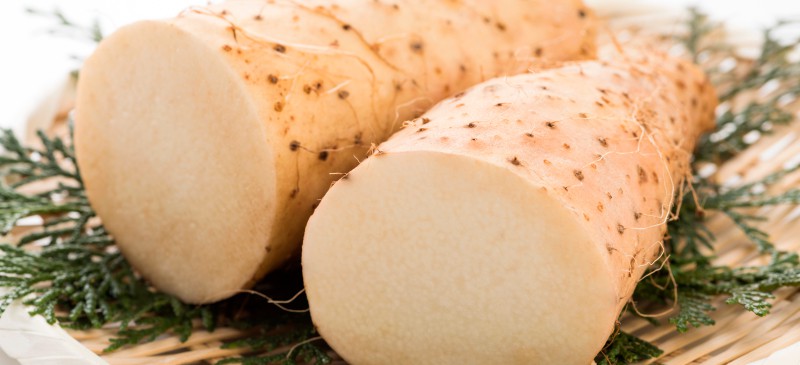This Dr. Axe content is medically reviewed or fact checked to ensure factually accurate information.
With strict editorial sourcing guidelines, we only link to academic research institutions, reputable media sites and, when research is available, medically peer-reviewed studies. Note that the numbers in parentheses (1, 2, etc.) are clickable links to these studies.
The information in our articles is NOT intended to replace a one-on-one relationship with a qualified health care professional and is not intended as medical advice.
This article is based on scientific evidence, written by experts and fact checked by our trained editorial staff. Note that the numbers in parentheses (1, 2, etc.) are clickable links to medically peer-reviewed studies.
Our team includes licensed nutritionists and dietitians, certified health education specialists, as well as certified strength and conditioning specialists, personal trainers and corrective exercise specialists. Our team aims to be not only thorough with its research, but also objective and unbiased.
The information in our articles is NOT intended to replace a one-on-one relationship with a qualified health care professional and is not intended as medical advice.
Can Wild Yam Actually Benefit Your Health?
December 5, 2024

During the fall and winter months, the desire for yams increases steadily. They are deliciously rich in vitamins and flavor, so what’s not to love? However, when we are talking about the wild yam, it isn’t what you think.
For centuries, Native Americans and early Americans have used wild yam, or Dioscorea villosa, for a range of possible health benefits.
The medicinal benefits lie in the dried roots or rhizome. The roots of the wild yam contain diosgenin, a plant-based estrogen that can convert into the hormone known as progesterone.
What’s important to note is that our bodies do not convert the chemical into the estrogen hormone — that must be done in a laboratory. Regardless, this makes it a phytoestrogen food, meaning it comes from plants that could potentially produce estrogen therapy and menopausal relief.
Those aren’t the only wild yam benefits either.
Wild yam benefits
1. Potentially regulates blood sugar
The U.S. National Library of Medicine has noted that wild yam may help regulate blood sugar. This is believed to be due to a substance called dioscoretine and has shown positive results in studies.
Research from the Phytotherapy Research Laboratory at the University of Nigeria found that blood sugar was lowered in diabetic rabbits when administered dioscoretine that was extracted from tubers.
While human trials are lacking, the abundance of evidence on animals does provide promise it may aid blood glucose regulation.
2. May fight cancer
A study was conducted in Japan to help determine if wild yam could help reduce the risks of cancer. While they noted further research is needed, the researchers did find that the rhizome within the wild yam plant — which produces the major compound dioscin — possessed antiproliferative effects on leukemia cells.
Although it’s often used as a supplement, in the northern part of Japan wild yam is consumed as a health food, and this research shows it may be a cancer-fighting food.
Furthermore, research published in the American Journal of Chinese Medicine found “that wild yam extract acts as a weak phytoestrogen and protects against proliferation in human breast carcinoma MCF-7 cells.” These findings have been confirmed in other studies as well.
3. May help balance cholesterol levels
An animal study published in the Journal of Lipid Research indicated that the diosgenin found in wild yam may help raise good HDL cholesterol and lower LDL (the “bad” cholesterol). In the study, rats were given wild yam for a period of one week to determine if diosgenin suppressed cholesterol absorption, and it was found the rats had better HDL-to-LDL ratio.
Another study conducted on mice and rats suggested that supplementation using wild yam may be beneficial in controlling hypercholesterolemia.
This is another potential benefit that needs more human studies to verify the effects, but so far the animal research is promising.
4. May relieve cramps and muscle pain
Wild yam has been traditionally used to soothe muscle spasms and cramps, including menstrual cramps. This effect is linked to its antispasmodic properties, which help relax muscles and alleviate pain.
5. May help reduce photoaging
Studies have indicated that the diosgenin found in wild yam extract may have a “depigmenting effect.” This means it could help with issues such as melasma, melanodermatitis and sun lentigo — issues that ultimately result in hyperpigmentation.
Diosgenin has also been found to encourage new skin cells to grow, and this may have anti-aging effects.
6. May help treat menopause symptoms
Wild yam is often used as a natural remedy for balancing hormones, especially in women dealing with PMS or menopause. While it does not directly produce hormones, diosgenin can support the body’s own hormone production processes.
Wild yam also is often touted for its ability to alleviate menopause symptoms, such as hot flashes, night sweats and mood swings. This benefit is attributed to diosgenin, a compound in wild yam that can be converted into hormones like progesterone in laboratory settings.
However, while it has been claimed by many as a great way to reduce menstrual symptoms and assist with hormone replacement during menopause — and there is some research to support this — there hasn’t been strong evidence to support this benefit. In fact, the results have been mixed.
For instance, a study was conducted using a wild yam cream, similar to what you may think of as progesterone cream, in 23 healthy women who were experiencing menopause. Three months into the study, results showed that there were no significant changes, and although there were no side effects, the cream had little to no effects on menopausal symptoms overall.
7. May reduce rheumatoid arthritis symptoms
Wild yam contains anti-inflammatory compounds that may help reduce symptoms of rheumatoid arthritis (RA), such as joint pain and swelling. Diosgenin has demonstrated significant anti-inflammatory effects in preliminary studies.
Human-based research is limited, but diosgenin has been found in lab research to help inhibit excessive proliferation and inflammatory response of synovial fibroblasts associated with RA. This suggests that wild yam may complement traditional RA therapies.
How to use
It is important to consider a few factors regarding the correct dosage of wild yam. Age and health conditions of the individual are important, especially if pregnant.
It is always best to consult a physician, especially since there really isn’t enough evidence about wild yams at this time. Follow the directions on labels, and check with your healthcare provider first.
Wild yam is usually found as a liquid extract, dried herb, powder, capsule or tablet. The liquid version can be made into tea.
You can also purchase creams containing wild yam, but unless it has been to a laboratory, it likely does not contain the chemical needed to affect hormones. Our bodies do not convert it naturally.
You can also add it to a tincture — ask your doctor about the best application.
Using wild yam therapeutically is not recommended for children. There simply isn’t enough data to support its safety.
Wild yam is often combined with other herbs known to have estrogen-like effects, namely black cohosh.
Wild yam creams, tablets and powders may contain synthetic hormones since they are produced in labs. Check the ingredients carefully, and consult a doctor.
As an anti-spasmodic, it may help with coughs, spasms and nausea. Use the recipe below:
Wild yam recipe
INGREDIENTS:
- 8 ounces chopped, fresh wild yam root (or 4 ounces of dried)
- 4–5 cups of water
- 1–2 drops peppermint essential oil
- 1 sprinkle of pure stevia to taste (optional)
DIRECTIONS:
- In a saucepan, cover the chopped, fresh wild yam root with water, and bring to boil.
- Reduce heat, and allow it to simmer for 20 to 30 minutes.
- Strain, then add the peppermint and stevia.
- Have ½ cup, twice a day.
- Store in the refrigerator.
Wild yam vs. other yams
Wild yam
A perennial vine, wild yam is typically the long, slender and knotted tuberous rootstock of the plant. The leaves are heart-shaped, growing anywhere from two to six inches long and nearly as wide.
The lower leaves often grow in twos and fours, and the plant contains small greenish-yellow flowers that smell a lot like cinnamon. Many of the varieties develop edible tubers much like potatoes.
If you are looking for wild yam, you probably won’t find it in the produce section but rather in the supplement section as a dried root, dried root powder, capsule or liquid. Some other names for wild yam include:
- aluka
- China root
- colic root
- devil’s bones
- shan-yao
- yuma
- rheumatism root
- red velvet yam
Wild yam is mainly used as a supplement due to the diosgenin it contains, which can be used to produce hormones when it goes through a chemical reaction.
Wild yams grow best in flooded freshwater marshes and swamps, non-tidal shrub swamps, roadside ditches and forested wetlands throughout the eastern United States. Inland, wild yam is found growing as a vine on shrubs.
Mexican yam (jicama)
You may have heard of and even eaten jicama — the Mexican yam that is a member of the Fabaceae (pea) family.
It is a perennial that grows in areas that do not get frost. Jicama, often served in salads, is found in U.S. supermarkets, but it’s imported from Mexico and the Caribbean.
Only the root of Mexican yam can be consumed. All other parts, including stems, leaves, flowers, pods and seeds, contain rotenone, a natural pesticide not safe for eating.
Yam
Yams are native to Africa and Asia and closely related to lilies and grasses. Yams come in different sizes but are usually similar to the size of a small potato.
They contain more starch and are drier than sweet potatoes.
Risks and side effects
Let’s stress again that there is a lack of human studies on wild yam. Therefore, you need to consult with a doctor or herbalist first, especially if you are pregnant, nursing, suffer from any disease or are taking medication.
Authorities warn wild yam extract could cause problems if you are currently taking estradiol, which is an active ingredient that may be in your birth control pill or hormone replacement therapy.
Allergic reactions are possible, so it is best to stop taking wild yam extract if you experience rashes, swelling of the tongue or lips, difficulty breathing, or throat swelling.
Final thoughts
- Wild yam, or Dioscorea villosa, has many purported uses and benefits, but insufficient scientific data exists for some of them, such as menopause relief and hormonal balance.
- However, wild yam benefits are believed to include the ability to potentially help regulate blood sugar levels, improve cholesterol and reduce photoaging.
- Wild yam is usually found as a liquid extract, dried herb, powder, capsule and tablet. You can also use the liquid to make tea, and creams are available. But remember that unless it has been to a laboratory, the cream likely does not contain the chemical needed to affect hormones because our bodies do not convert it naturally.


